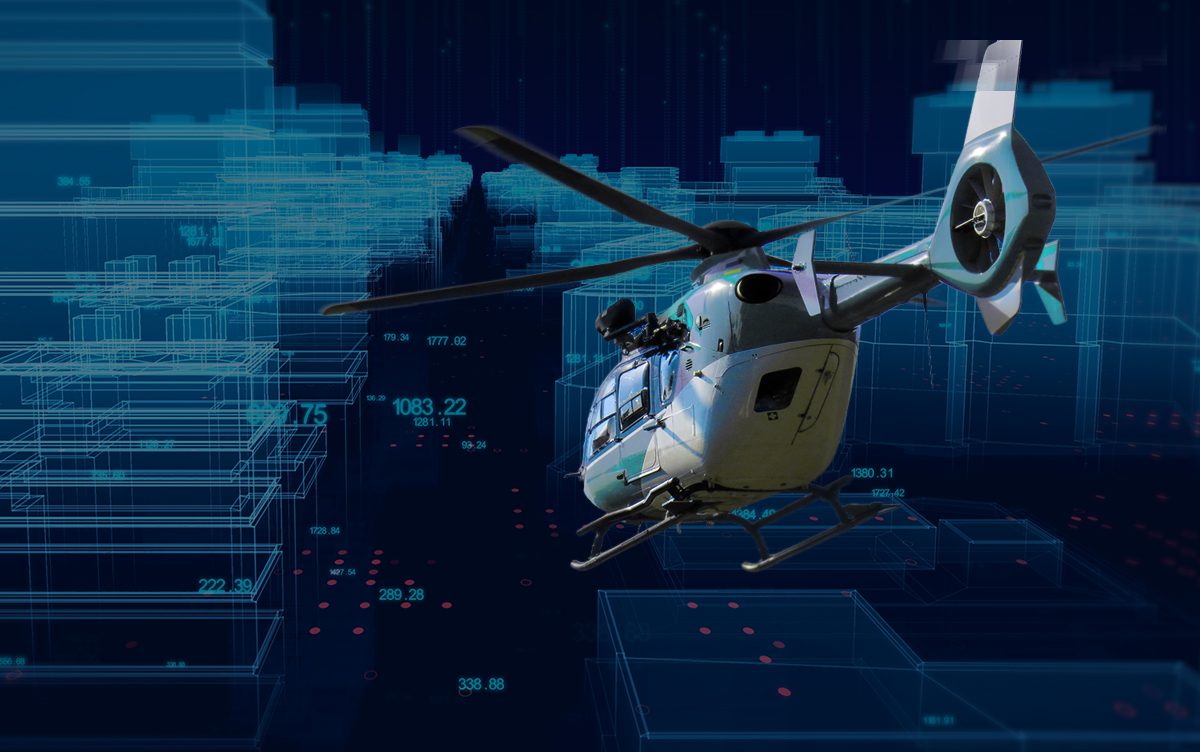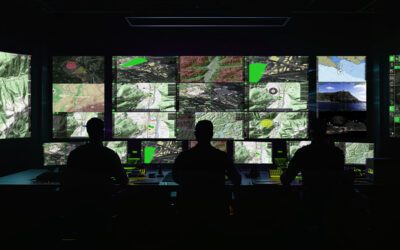Augmented Reality, or AR, has pushed our understanding of technological concepts and the world around us to new levels. But are augmented reality solutions having a lasting effect on how we live our lives?
In this article, we’ll examine what AR is, how it works in various industries, and how FlySight’s OPENSIGHT Enhanced Reality system could be the next step forward in its developmental pathway.
What is Augmented Reality?
There is a clear distinction between Virtual Reality and Augmented Reality or Enhanced Reality. AR is a direct integration between digital information and a user’s real-world experience. Put simply, it complements the real world and adds to a user’s perception of their environment.
A good example of augmented reality platforms in operation is FlySight’s AR systems for helicopter crew. The OPENSIGHT Enhanced Reality system overlays digital information onto real-time maps, providing the user with instant access to a wealth of additional data. This can include anything from precise addresses and information on known occupants when overflying a building to data on the landscape’s topography or even a system for seeing through foggy conditions.
Whereas Virtual Reality takes you out of the real world and surrounds you with a virtually generated landscape, augmented reality systems work alongside the real world. This gives them infinitely more practical applications in a wide range of uses.
Augmented reality systems in operation
Augmented reality brings a lot to the table in all kinds of different industries. While there are numerous applications in medicine, education and entertainment, it’s in sectors such as aviation, law enforcement and the military where AR has really grown. Let’s look at some of the most practical applications of augmented reality systems and how they enhance the lives of those who use them.
Law Enforcement – protecting and serving with AR
Law enforcement operatives don’t just tackle crime. Their remit covers far more than chasing down criminals. It includes a huge range of responsibilities, from crowd monitoring and control to searching for missing persons and traffic monitoring. Any augmented reality system that can aid law enforcement agencies in their duties is to be embraced. AR that can be deployed remotely, especially for aerial units and helicopter crews, can make their job easier on many levels.
The major advantage of augmented reality systems is that they can be integrated into existing and already familiar hardware. This not only makes them far more user-friendly, but it can reduce costs on both installation and training time. AR provides crews with the option to overlay additional layers onto existing maps.
The level of detail can be down to the millimetre, enabling pilots to manoeuvre without compromising safety. This is particularly important in operations carried out in urban areas, where AR layers showing hazards such as overhead cables could be mission and safety-critical.
For Law Enforcement use, real-time Enhanced Reality systems such as OPENSIGHT bring real benefits to operational planning and applications in surveillance, SAR, traffic control and critical events monitoring. The fact that these systems can send information to the cloud for instant access by other users makes AR even more mission-critical in modern law enforcement.
Pilot training and education
Augmented reality platforms have also proven their worth in education, especially more advanced applications such as pilot training. This can be exceptionally expensive and time-consuming, so anything that provides additional support for training establishments is to be welcomed. People learn in different ways, and there is no truly effective ‘one-size-fits-all’ solution for aviation training.
Frequent investigations and studies have shown that augmented reality systems enhance the learning experience and enable trainees to remain more focused, engaged and motivatedhan traditional textbook and classroom learning. The ability to feel truly involved in the process and to have simulations that reflect real life while utilising equipment and technology that trainees are already familiar with speeds up learning without cutting corners.
Augmented reality solutions in all types of educational environments are effective and proactive tools. As the next generation becomes more focused on digital elements within their lives, it makes sense to dovetail AR into the learning process.
Augmented Reality in aviation
AR isn’t just useful for pilot training. It has a role to play in many aspects of aviation. Its compact nature and the fact that it can be grandfathered over to existing technology make augmented reality platforms ideal for the cramped conditions onboard a helicopter. OPENSIGHT Mission Console is a fine example of AR at work in this environment.
Because AR platforms can be modular, they can be customised to suit individual requirements. This could mean that topographical overlays could be included in a Search & Rescue unit to help them navigate difficult terrain. Law enforcement pilots could focus on a single target using image stabilisation and clarification while the AR unit filters out any background noise for a more efficient operation.
FlySight’s OPENSIGHT augmented reality solutions integrate geo-exploitation toolboxes into existing systems. These can function as real-time data analysis tools, target recognition, and terrain interpretation systems. The key element in all of this is that the systems are intuitive and user-friendly. This is why AR is becoming such an integral part of aviation systems both in the air and on the ground.
Indeed, you’ll find augmented reality systems in operation in everything from aircraft control towers to ramp handling, pilot training, maintenance and aircraft assembly and repairs. For SAR teams, augmented reality has a massively important role to play too, as a coordinated search could quite literally mean the difference between life and death.
The introduction of drone technology capable of incorporating augmented reality platforms means that SAR operations can be far more time-efficient, cover larger areas more quickly, and result in more positive outcomes.
FlySight’s OPENSIGHT – Augmented Reality for the future
As we move into the next phase of integration between augmented reality systems and our everyday lives, FlySight’s OPENSIGHT technology is at the leading edge of innovation and development. Our augmented reality system have a wide range of applications, from aviation to SAR, law enforcement and commercial uses. From HURs to overlays, our displays can be easily integrated into almost any existing system.
It’s this mission agility and flexibility, as well as AR platforms’ compact nature, that makes them so successful. The fact that they require less training time than other systems because of their intuitive nature also works in their favour.
Augmented reality systems have a real-world impact in a wide spectrum of applications, opening the door for greater innovation and even more practical applications as we move forward.
You can find out more by browsing our OPENSIGHT Resources page, where you’ll find informative videos as well as more in-depth analysis of the various applications of OPENSIGHT turnkey solutions. For a more bespoke service and to discuss your exact specifications, get in touch with FlySight now to find out about our innovative enhanced reality solutions.




